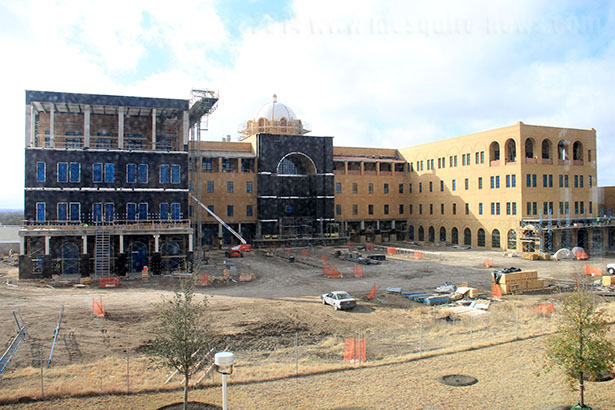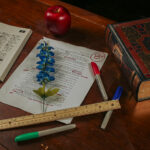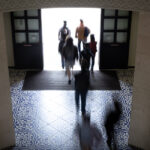
By Alma Linda Manzanares
Money for two new buildings top the university’s priority list as it prepares for the 84th Texas Legislature in 2015.
In addition to requesting funds in the form of tuition revenue bonds for a science and technology building, a student success center is needed, President Maria Hernandez Ferrier said.
The 83rd Texas Legislature rejected tuition revenue bonds (TRB) totaling $79 million in August 2013, which would have paid for constructing a science and technology building and physical plant.
While Ferrier said the university will seek funds for a physical plant along with the two buildings, Provost Brent Snow said the request for the plant was undecided.
Ferrier said she’ll request funding for downward expansion at the 2015 legislative session; the addition of freshman and sophomore level courses.
The university is in the preliminary stages of budgeting for the TRBs, Ferrier said. “A lot has changed since two years ago,” she said. “Things cost more.”
With that in mind, Ferrier said administration will consult with facilities for the Texas A&M System to determine cost per square footage for labs and classrooms.
The requests are part of the university’s 2015 fiscal budget, due to the A&M System’s Board of Regents for review March 7. The board must approve the budget to be considered by the Legislature.
Provost Brent Snow said although figures have not been determined, he predicts costs will equal last year’s $79 million demand.
He said he thinks the requests will garner serious attention because of rapid university growth, and a current lack of buildings. In August, the university will have three completed buildings. The enrollment this spring is 4,329 students.
“Because we’re growing so fast …, it’s hard to ignore us in terms of our needs. There are a lot of schools that don’t have many more students than we do, that have a lot more facilities,” Snow said. “I think it’s likely we’ll get them. But, of course, I said that last year.”
Public-private partnerships
Administrators have considered developing a public-private partnership to finance university needs because they can not count on the Legislature’s willingness to consider TRB requests.
Snow said if the university enters a partnership to fund an academic building, it means a private company would construct a building to the university’s specifications and A&M-San Antonio would lease the building.
“We’re working with that as a possibility, and we’re looking at possible folks who would be interested in that partnership,” he said, although he would not identify prospective partners. “If that happens, that would help bring the College of Business over on this campus (Main Campus Building).”
A building financed through a partnership could not sit on university property. Snow said the land directly across University Way, north of Main Campus, does not belong to the university and could house the building.
Verano Land Group owns the undeveloped acreage surrounding Main Campus. The university and Verano had a deal to donate almost 700 acres and assist with site building down University Way until November 2013 when the developer announced it was ready to leave the South Side and possibly sell the land.
Snow said he is not familiar with all the details but said he was aware of litigation. He would not confirm whether Verano plans to sell.
Ferrier said the university will continue to explore a public-private partnership because of the mass amount of needs. “There’s a lot of other things that we would want for students to have a full university experience like at any other university,” she said.
Ferrier’s priorities include child care, a recreation center, intramural sports, designated eating spaces and moving the College of Business to Main Campus.
“All of those things are important to our students,” she said. “We’re working everyday to try to get there.”
Student success center
As part of meeting student needs, Ferrier described the proposed student success center as a “one-stop shop,” where students can seek help with registering, advising, tutoring and graduation services.
“It’s one thing to have students enroll, but it’s another thing to help them all the way through to graduation,” Ferrier said. “A lot of our students didn’t start out with this college-going culture and they’ve worked really hard to get here.”
Snow said some of the offices the center would house include student affairs, disability support services, counseling center and financial aid. These offices are currently housed at Main Campus Building.
Since the goal is to have all three colleges at one campus, Snow said if a student success center is funded, Main Campus will likely help house the College of Business, which will still be housed at Brooks City-Base Campus after the completion of the Central Academic Building (CAB).
Along with student affairs housed in a student success center, Snow said it’s possible that part of the building could hold a gymnasium.
The university does not have a recreational center or gym for sports activities, but is considering a recreational sports fee, which requires a majority vote from the student population before it can be approved and implemented by the board of regents.
Science and technology
Both Ferrier and Snow emphasized the importance of a science and technology building for the university, which currently has only one lab.
“Yeah, that’s really bad,” Ferrier said about having only one lab available. “As we grow our biology program, our cyber security program, as we start adding programs, it’s very important that we have what ya’ll need.”
She said when the university downward expands, the demand for labs is greater because the core curriculum includes lower-division science courses.
The only lab in Main Campus is primarily used for biology. The CAB will provide three additional labs upon completion this summer.
Snow said expanding programs in science and math will demand finding money for a science and technology building.
“I think we’re going to be invested in the STEM (science, technology, engineering and math) field,” he said.





